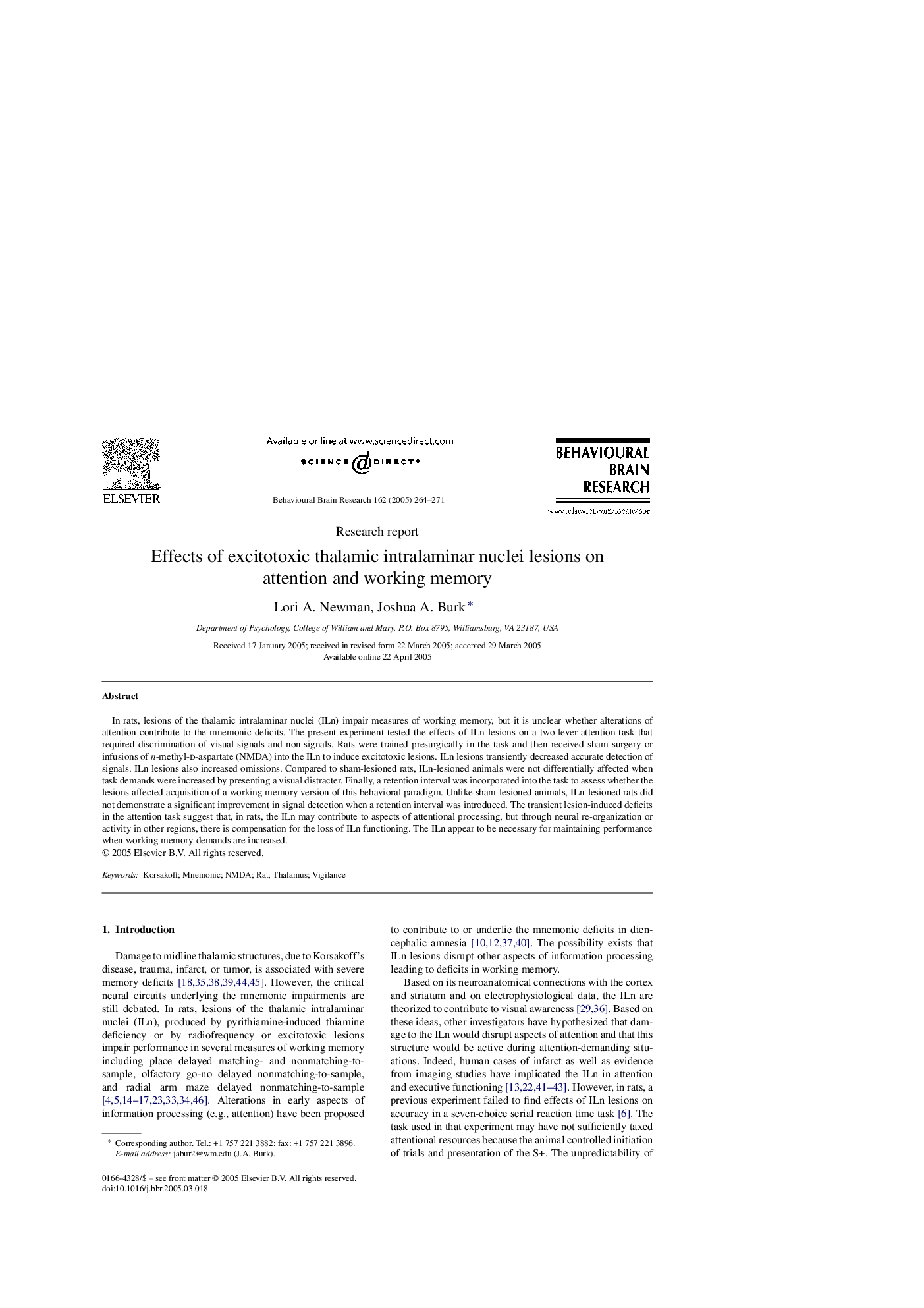| Article ID | Journal | Published Year | Pages | File Type |
|---|---|---|---|---|
| 9406414 | Behavioural Brain Research | 2005 | 8 Pages |
Abstract
In rats, lesions of the thalamic intralaminar nuclei (ILn) impair measures of working memory, but it is unclear whether alterations of attention contribute to the mnemonic deficits. The present experiment tested the effects of ILn lesions on a two-lever attention task that required discrimination of visual signals and non-signals. Rats were trained presurgically in the task and then received sham surgery or infusions of n-methyl-d-aspartate (NMDA) into the ILn to induce excitotoxic lesions. ILn lesions transiently decreased accurate detection of signals. ILn lesions also increased omissions. Compared to sham-lesioned rats, ILn-lesioned animals were not differentially affected when task demands were increased by presenting a visual distracter. Finally, a retention interval was incorporated into the task to assess whether the lesions affected acquisition of a working memory version of this behavioral paradigm. Unlike sham-lesioned animals, ILn-lesioned rats did not demonstrate a significant improvement in signal detection when a retention interval was introduced. The transient lesion-induced deficits in the attention task suggest that, in rats, the ILn may contribute to aspects of attentional processing, but through neural re-organization or activity in other regions, there is compensation for the loss of ILn functioning. The ILn appear to be necessary for maintaining performance when working memory demands are increased.
Related Topics
Life Sciences
Neuroscience
Behavioral Neuroscience
Authors
Lori A. Newman, Joshua A. Burk,
